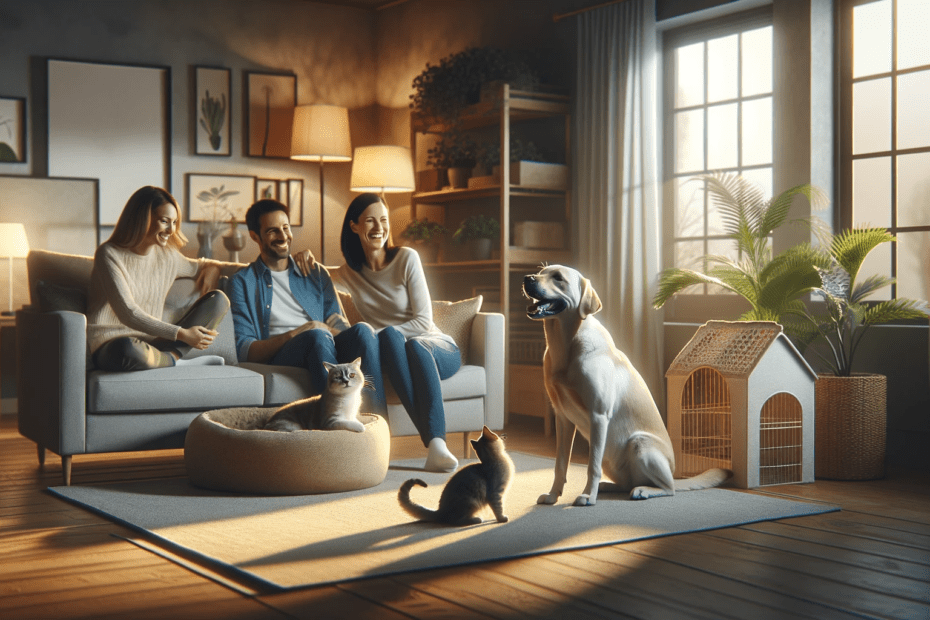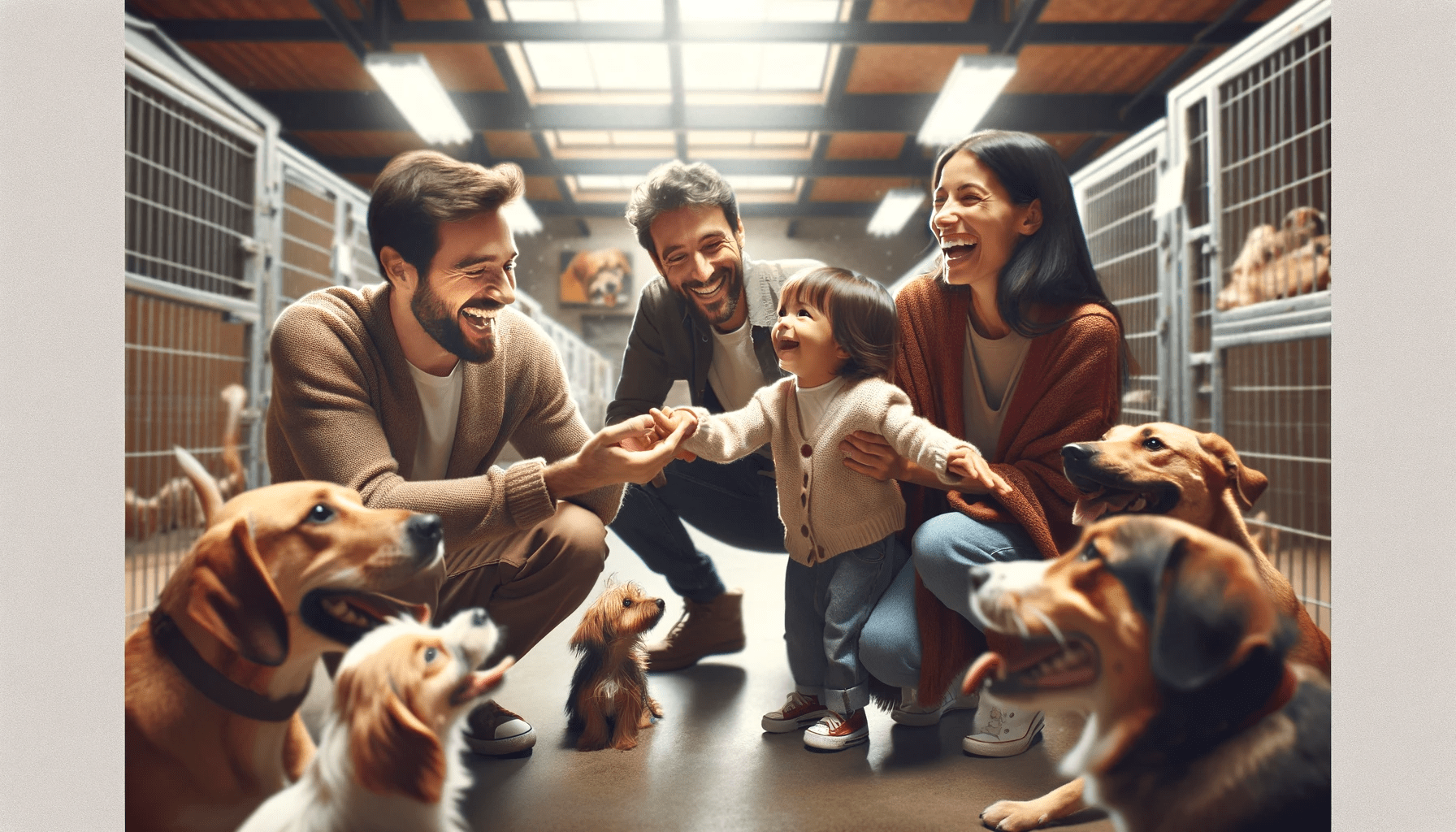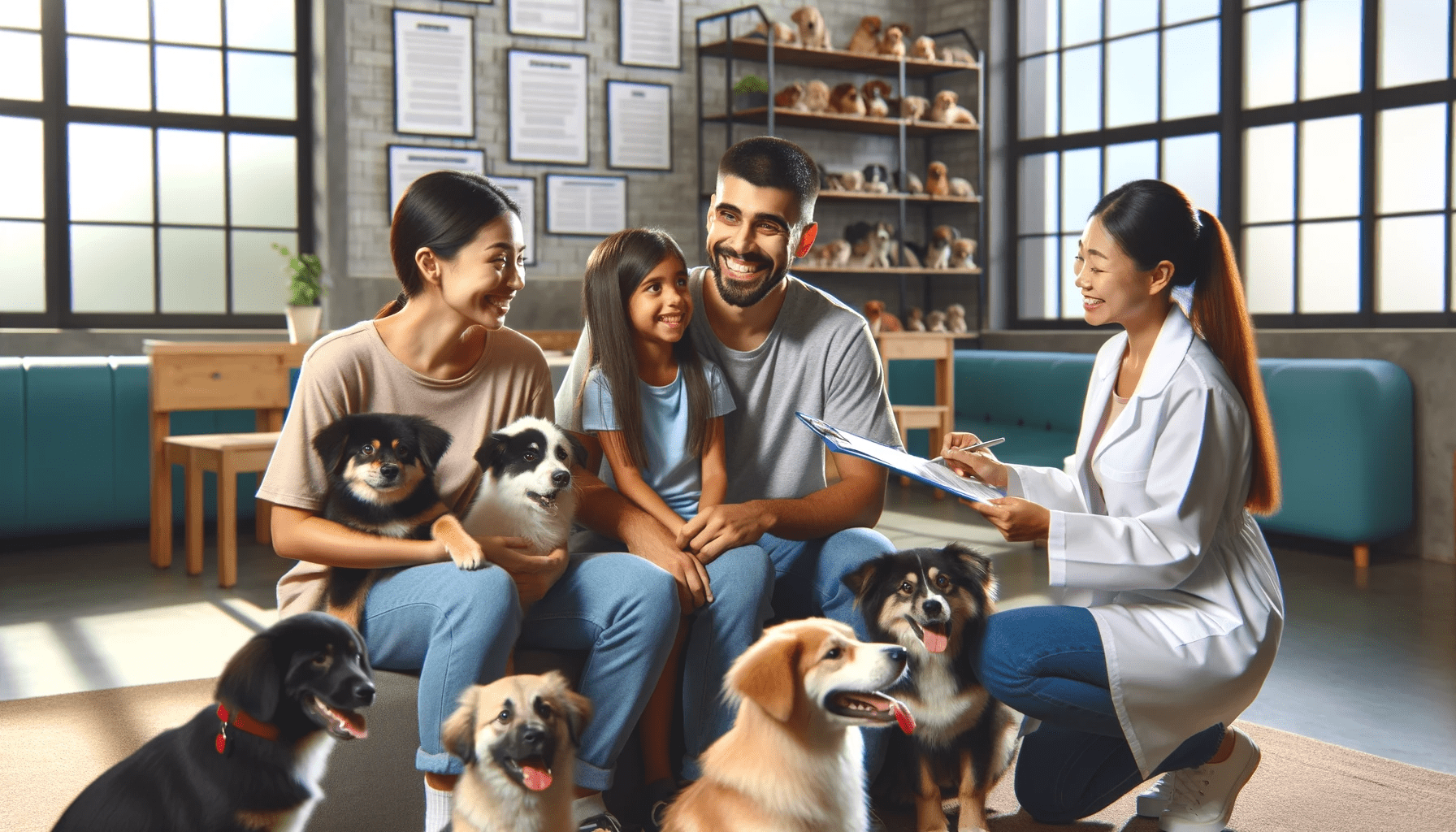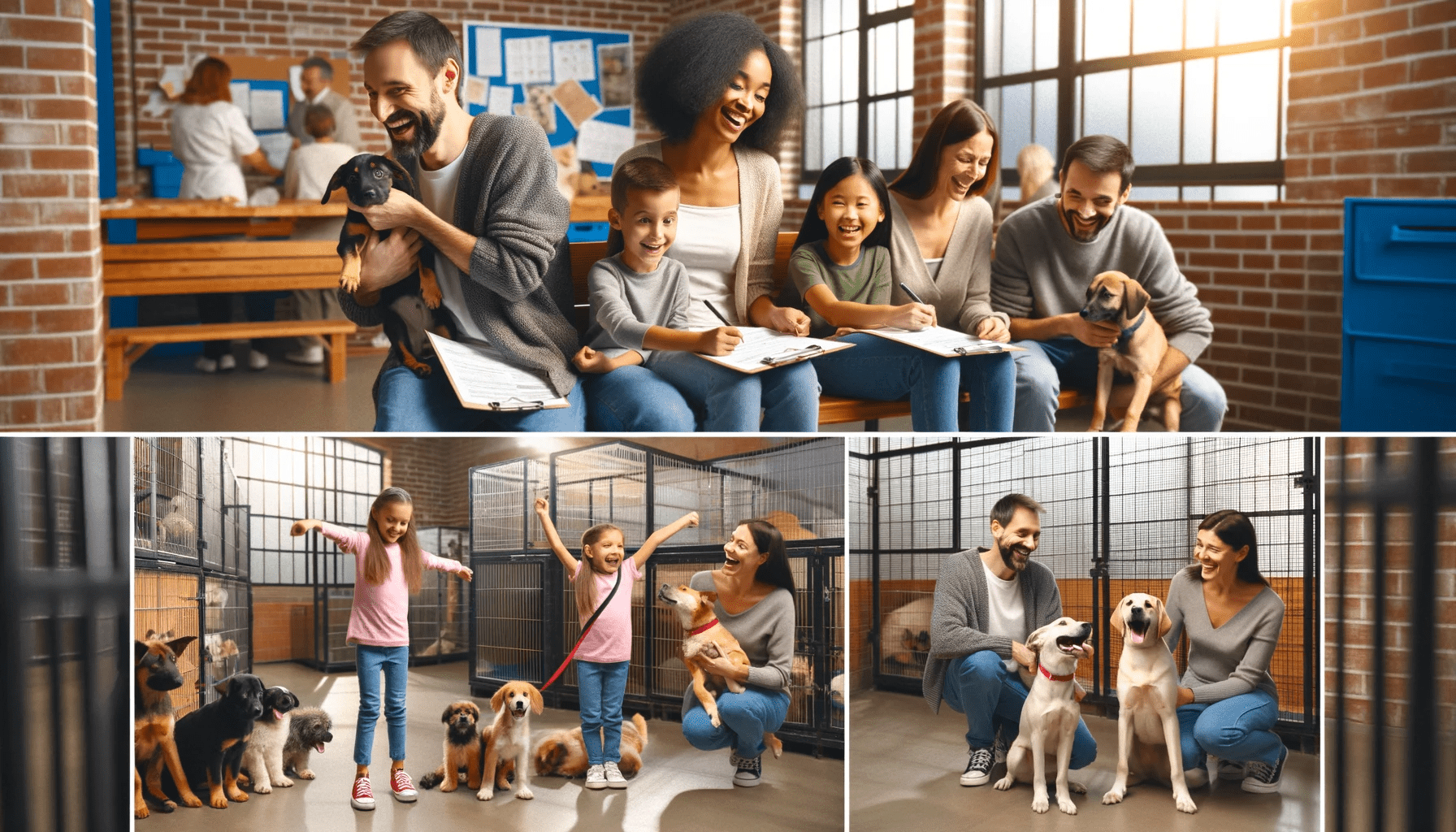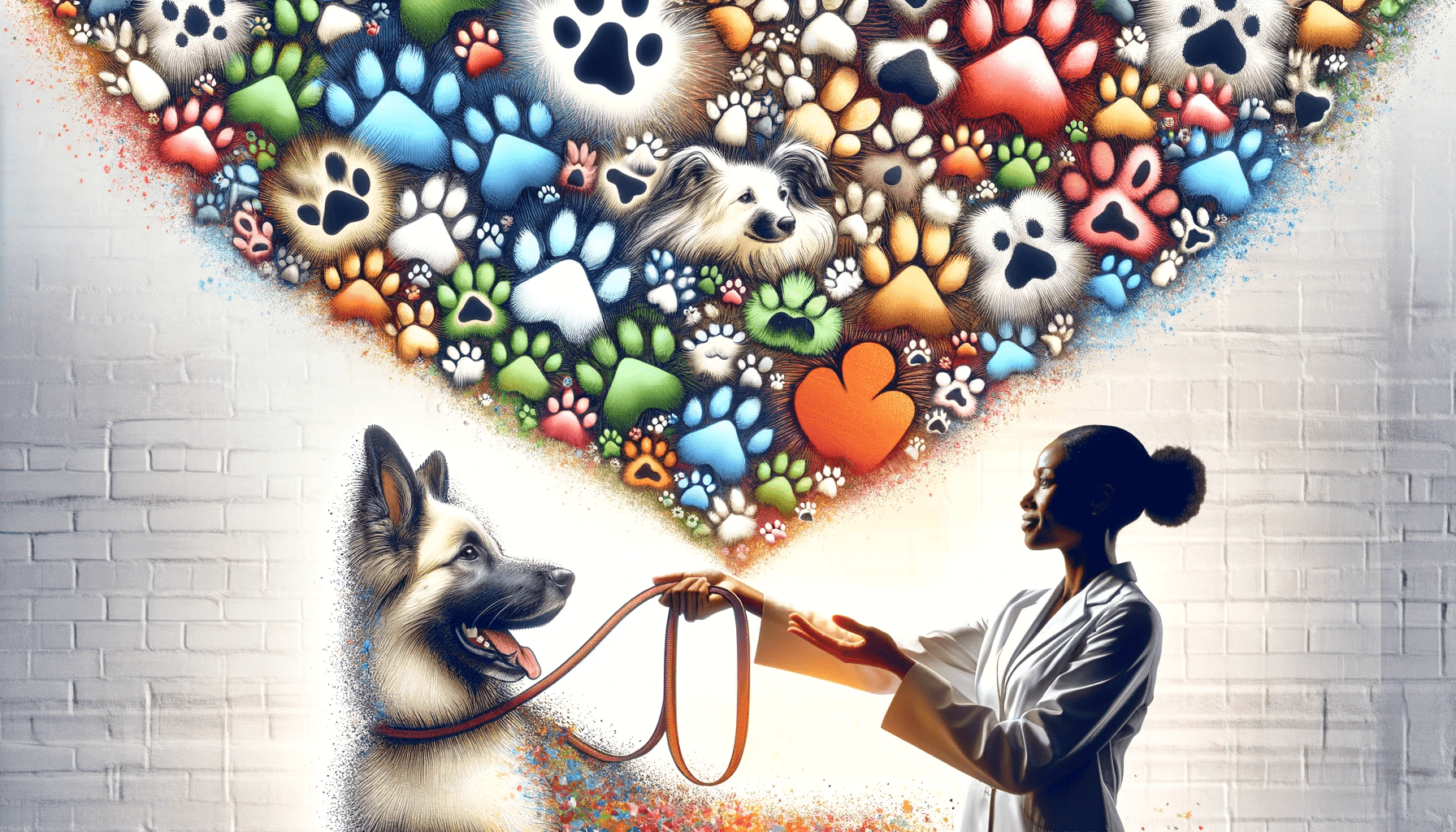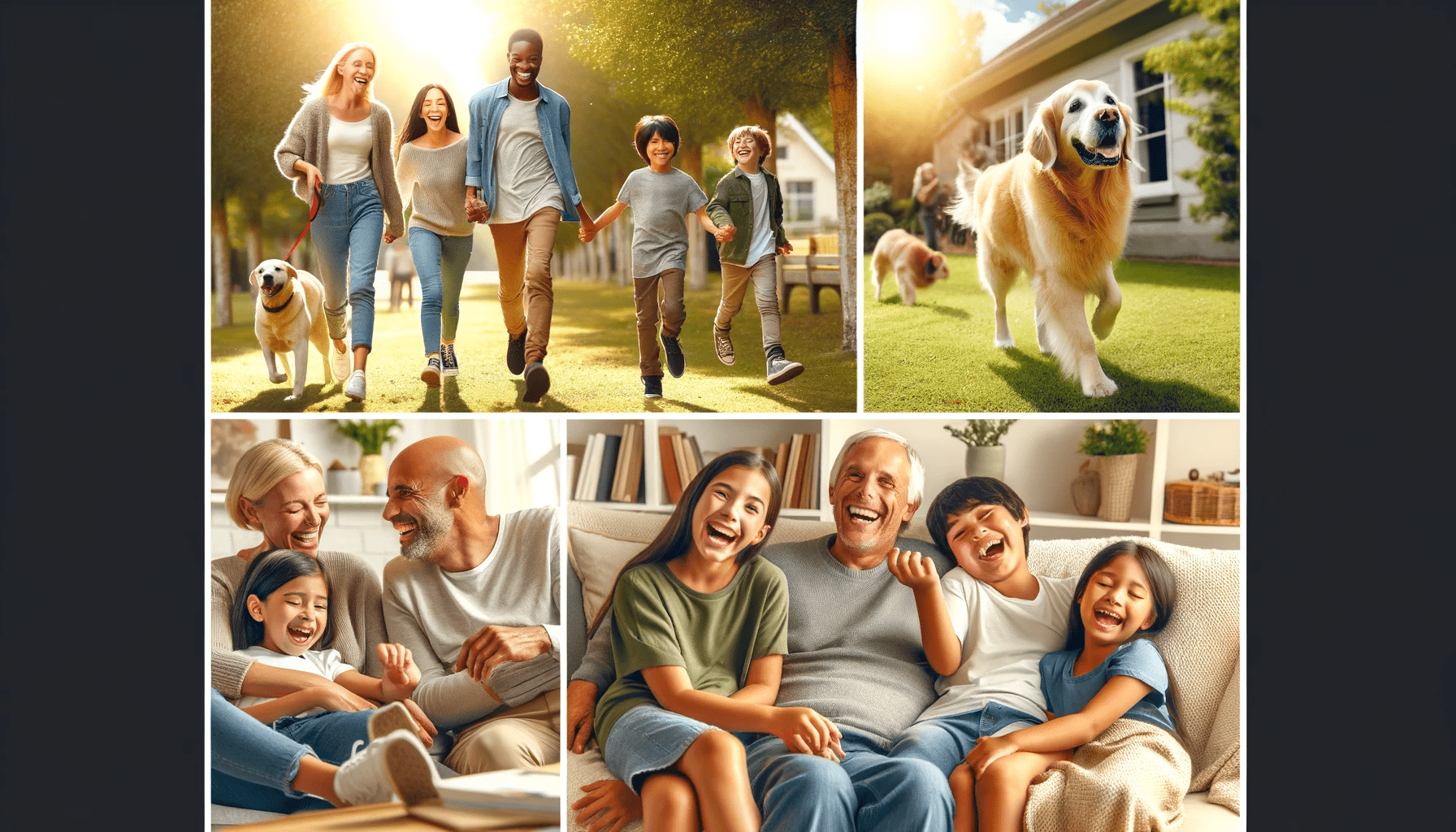Are you bringing a new adopted dog into a home with existing pets? Wondering how to ensure a smooth integration? Look no further!
This article will provide you with practical tips and insights on how to successfully integrate your new furry friend with your current pet family.
From preparing your home to addressing any conflicts, we’ve got you covered.
Get ready to build a harmonious and loving pack dynamic with ease.
Key Takeaways
- Crate train your new dog for a safe and comfortable space
- Gradually introduce the crate using positive reinforcement
- Establish a safe and neutral meeting space for the initial introduction
- Monitor body language and use positive reinforcement techniques during interactions
Preparing Your Home for a New Dog
Before bringing a new dog into your home, you should prepare the space to ensure a smooth integration with your existing pets. One important aspect of preparing your home is crate training. A crate provides a safe and comfortable space for your new dog, especially during the initial adjustment period. Make sure to choose the right size crate for your dog, where they can stand, turn around, and lie down comfortably. Introduce the crate gradually, using positive reinforcement to make it a positive and inviting space for your dog. This will help with house training and also provide a place for your dog to retreat to when they need some alone time.
Another crucial step in preparing your home is creating socialization opportunities. This is important not only for your new dog but also for your existing pets. Arrange playdates with other dogs or invite friends with dogs over to help your pets get used to being around different animals. It’s important to supervise these interactions and make sure they’re positive and controlled. Additionally, create separate spaces for each pet, especially during meal times and when they need some quiet time. This will help prevent any potential conflicts and ensure a peaceful coexistence.
Establishing a Safe and Neutral Meeting Space
To successfully integrate a new adopted dog with your existing pets, it’s important to establish a safe and neutral meeting space for their initial introduction. This space should be free from distractions and provide a neutral ground where all pets feel comfortable. It’s crucial to remember that introducing a new dog to your current pets can be a delicate process, requiring patience and consistency.
When establishing a meeting space, choose an area that’s large enough for all pets to move around freely without feeling crowded. It could be a local park, a friend’s backyard, or even a spacious living room. Make sure the space is secure and fenced off to prevent any potential escape attempts.
During the initial meeting, it’s essential to monitor the interactions closely. Keep all pets on leashes to maintain control and prevent any potential conflicts. Allow them to approach each other at their own pace, sniffing and investigating one another. It’s normal for some initial tension or uncertainty to arise, but with time and patience, they’ll gradually become more comfortable with each other.
If you’re unsure about handling the introduction process, don’t hesitate to seek professional help or resources. Trained professionals can provide guidance and support to ensure a smoother transition for all pets involved. They can offer valuable insights and techniques to help manage any challenges that may arise during the integration process.
Gradual Introductions and Supervised Interactions
Establishing a safe and neutral meeting space sets the foundation for gradual introductions and supervised interactions between your new adopted dog and existing pets. When introducing your new dog to your current pets, it’s important to take things slowly. Begin by allowing them to sniff each other through a baby gate or a crate. This allows them to become familiar with each other’s scent and presence without any direct contact.
As the introductions progress, it’s crucial to set boundaries for both your new dog and existing pets. Make sure all pets have their own separate spaces with food, water, and toys. This helps prevent any potential conflicts over resources. Additionally, ensure that each pet has their own designated sleeping area to avoid any territorial disputes.
During the initial interactions, keep a close eye on their body language. Look for signs of stress or aggression and be prepared to intervene if necessary. Use positive reinforcement techniques to reward calm and appropriate behavior. This can include treats, praise, and petting.
Addressing Any Behavioral Issues or Conflicts
When addressing any behavioral issues or conflicts between your new adopted dog and existing pets, it’s important to observe their interactions and intervene if necessary.
Managing territorial aggression and addressing resource guarding are two common behavioral issues that may arise during the integration process.
Territorial aggression can occur when a dog becomes protective over their new space or feels threatened by the presence of other animals. To address this, ensure that each pet has their own designated areas with separate food bowls, beds, and toys. Gradually introduce them to each other’s spaces, allowing them to explore and become familiar with each other’s scents. If any signs of aggression or tension arise, separate the animals and seek professional guidance.
Resource guarding, on the other hand, happens when a dog becomes possessive over their belongings, such as food, toys, or even their owners. To address this issue, practice positive reinforcement training, teaching the dog that sharing resources leads to rewards. Additionally, provide each pet with their own set of resources to prevent conflicts.
Building a Harmonious and Loving Pack Dynamic
- Create a positive and nurturing environment for your newly adopted dog and existing pets to establish a harmonious and loving pack dynamic. Fostering trust and using positive reinforcement are key elements in building this dynamic.
When introducing your new dog to your existing pets, it’s important to create a calm and controlled environment. Start by allowing them to sniff each other through a gate or barrier, gradually increasing their access to one another. This gradual introduction helps them become familiar with each other’s scents and reduces the chances of any aggressive behavior.
During this process, use positive reinforcement to reward good behavior. Praise and treats can go a long way in building trust and creating a positive association between the animals. For example, if your dog and existing pet interact calmly, reward them both with treats and praise. This will encourage them to continue their good behavior and strengthen their bond.
Additionally, make sure each pet has their own safe space within your home. This can be a separate room or designated area where they can retreat to if they feel overwhelmed or need some alone time. Providing each pet with their own space helps prevent any potential conflicts and ensures that they feel secure in their environment.
Frequently Asked Questions
How Can I Help My Existing Pets Feel More Comfortable During the Initial Introduction With the New Dog?
To help your existing pets feel more comfortable when introducing a new dog, focus on building trust and making gradual introductions. This will allow them to adjust at their own pace and reduce stress.
Is There a Particular Age or Breed of Dog That Is More Likely to Have Difficulty Integrating With Existing Pets?
Common challenges in integrating different dog breeds and the impact of age on the integration process of newly adopted dogs vary. However, it’s important to consider individual temperaments and personalities rather than solely relying on breed or age.
Are There Any Signs or Behaviors That Indicate the New Dog Is Not Getting Along With the Existing Pets?
If your new dog is not getting along with your existing pets, there may be signs of conflict such as growling, snapping, or avoidance. It’s important to introduce them slowly and monitor their interactions closely.
How Long Does It Typically Take for a New Dog to Fully Adjust and Get Along With the Existing Pets?
To fully adjust and get along with existing pets, it typically takes some time for a new dog. However, you can help by introducing them slowly and without stress. Establishing a routine is also important in the integration process.
Should I Consult a Professional Trainer or Behaviorist if the Integration Process Is Not Going Smoothly?
If the integration process is not going smoothly, it’s a good idea to consult a professional trainer or behaviorist. They can provide guidance and alternative integration methods to help your new dog get along with your existing pets.
Conclusion
In conclusion, integrating a new adopted dog with existing pets requires careful preparation, gradual introductions, and addressing any behavioral issues or conflicts that may arise.
By establishing a safe and neutral meeting space and supervising interactions, you can ensure a harmonious and loving pack dynamic.
Remember to be patient and give your pets time to adjust to the new addition.
With proper guidance and love, your furry family members can live together happily.
